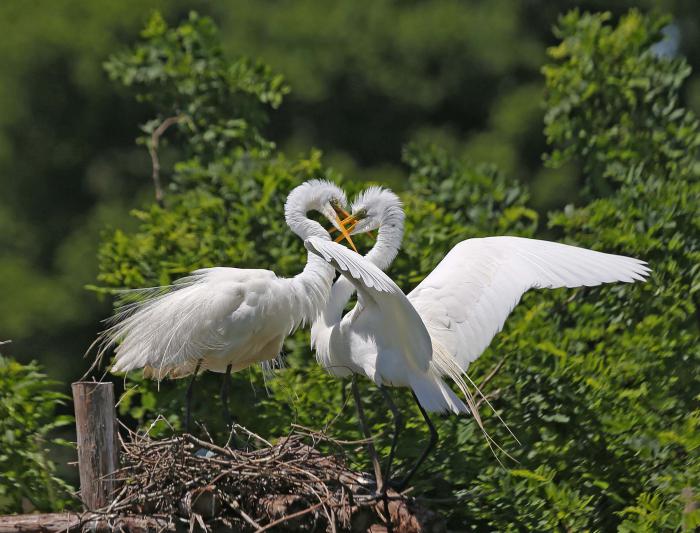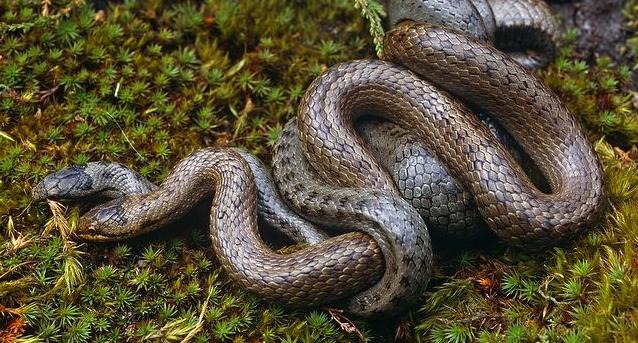The bird class is a separate progressive branch of animals. They came from reptiles. Animals of this group, however, were able to adapt to the flight.
Before turning to the question of how birds mate, consider their biology.
General characteristics of the class
The progressive features of the organization are as follows.
- High level of development of the nervous system and, therefore, a wide variety of options for adaptive behavior.
- Constant high body temperature, which is caused by intense metabolism.
- Compared with the subordinate subtypes and classes of animals, birds have a more perfect reproduction mechanism, which is expressed in incubation of eggs and feeding of offspring.
- The presence of adaptive organs for flight and at the same time the ability to move on the land surface, and in some species - the ability to swim and move on the water surface.

The above class features allowed these animals to spread throughout the globe.
Male genitals
Seed plants are a pair of bean-shaped bodies thatlocated above the top of the kidneys. They are suspended on the mesentery. The size of the testes varies throughout the year. During the breeding season, these organs increase. So, in a chaffinch, for example, they can increase by 1125 times, and in an ordinary starling 1500 times.

Attached to the inside of the testessmall appendages. The vas deferens extend from them, stretching parallel to the ureters and flowing into the cloaca. There are bird species in which the seed ducts form small extensions - the seminal vesicles, which serve as a kind of reservoir for sperm.
Not all species have a copulatory organ.A functioning penis in birds is a protrusion of the cloaca. It is present in ostriches, Tinamou, goose. In bustards, storks and herons, the copulatory organ is rudimentary.
Answering the question of how birds mate, it is worth noting that in most species fertilization occurs due to the closest approach of the cesspool holes of the female and the male, when the male ejaculates semen.
Female genitals
The peculiarity of the development of the female genital systembirds is that it is sharply asymmetrical in most species, i.e. consists of the left ovary and the left oviduct. The right ovary develops only in a few birds: eagles, owls, chickens, shepherds, parrots, some predators of the day. But even a well-developed gland in this case rarely functions. It so happens that a ripe egg in the right ovary is eliminated through the left oviduct.

The reason for this asymmetry is that females of birds lay large eggs with hard shells, which move along the oviduct for quite a long time - about 2 days.
The ovary is a granular body of irregular shape. It is located in front of the kidney. The size of the ovary depends on the maturity of the egg in it.
The oviduct is a long tube through which a ripe egg moves. It is connected at one end to the cloaca, and the other to the body cavity.
Egg breeder consists of several departments.The first is rich in special glands that secrete protein. In this section, the egg is about 6 hours and covered with the first protective layer. The second section is thinner; there the egg is covered with the shell looped shells. The next section of the oviduct is the uterus. In her egg is about 20 hours. Here limestone shell and various pigments are formed, which color it. The last section - the vagina, from which the egg falls into the cloaca, and then - out.
The entire time of passage of the egg through the oviduct in a chicken is about 24 hours, in a pigeon - 41 hours.
Bird Breeding Features
Despite the general breeding pattern, each species of bird is individual.
Studying the question of how domestic birds mate, such as a chicken, for example, it is worth remembering that they can lay eggs without a male. This means that the exiting egg will be unfertilized.
The testes of males begin to function,increase in size - the males are ready to begin fertilization. There is a transfer of genetic material to females, which after a certain period begin to lay eggs. The number of them in different species of birds varies.
Bird breeding takes place at different times of the year.Species biology is very diverse. If one species is ready for reproduction in early spring, then the other is only in the middle of summer. Some birds are sedentary and nest in the same place, while others fly from distant countries during the nesting and breeding period.
To better understand how birds of a particular species mate, it is necessary to study the individual characteristics of the reproductive system of its representatives.








